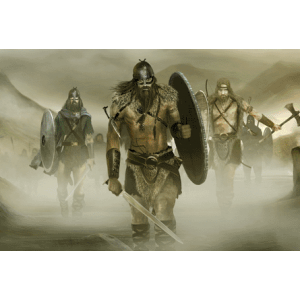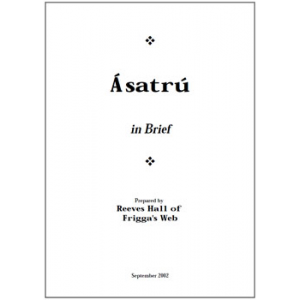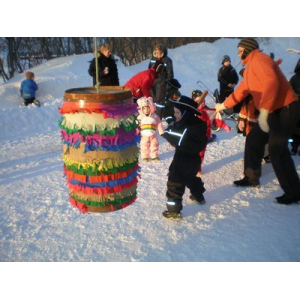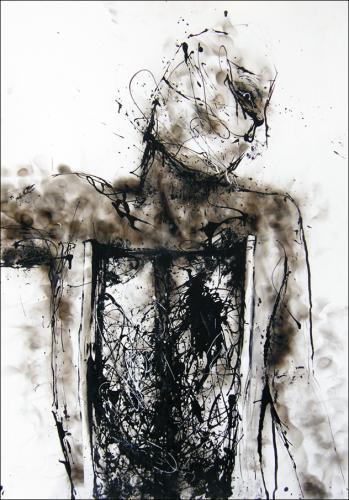
The Celtic Lugh and our own Odin are much the same. Odin is father of the Gods, keeps two ravens, carries a magic spear, and has one eye. Lugh is first in the Celtic family of Gods, is linked with ravens, carries the Spear of Victory, and closes one eye when he performs fantastic deeds on the battlefield.
The Nordic Thor, whose name means "Thunderer", prizes his mighty hammer. He rides about the heavens, laughing in his red beard, in a wagon pulled by supernatural goats. Taranis of the Celts, whose name also means "Thunderer", drives a chariot behind sacred bulls. He wields the thunderbolt, whose name in the old Gaelic tongue derives from the same Indo-European root as the name of Thor's hammer, Mjolnir. Taranis, too, is pictured as having a flowing red mane.
Tyr, as our tales tell, lost his hand binding Fenris the wolf. He used to be the Sky God,
scholars say, until Odin took his place. The Celtic Nuada lost his arm in battle against the Fomorians, and so Lugh - the Celtic equivalent of Odin - became leader of the Gods.
In the domain of fertility and plenty, our own Frey rules supreme among Asafolk. One of his favorite beasts is the horse, which just happens to also be sacred to Dagda, "the good God", who is Frey's Celtic equivalent.
Other divine beings...
Giants? The Celts have them just as Asafolk do; they're called the Fomorians, and the Celtic Gods battle mightily against them. Moreover, the role they play is pretty much the same - representing the forces of inertia and entropy in the cosmos.
Valkyries find their reflection in the Morrigan, fierce
Goddesses of the battlefield who grant victory, spin the fates of war, and serve the heroes in the afterlife. This twin aspect - fiends of blood and death on the one hand, enticing lovers on the other - is found in both cultures. Similarly, both Celtic and
Germanic sagas tell of supernatural women warriors who instruct and initiate the chosen heroes. Brynhild teaches Sigurd hidden magical lore, and the female chieftain Scathach ("Shadow") takes the Irish Cu Chulain under her care and makes him the warrior he is destined to become. It is probably no accident that Sigurdand Cu Chulain are descended from Odin and Lugh, respectively.
Consider the "lesser" beings, the ones that seldom figure in myth and poetry, but who make the life of the common man and woman more bearable. The land spirits, for example, are alike in both cultures. Elf lore, and the connections of these wights to the ancestors, was recognizably the same to the ancient Teuton and his or her Celtic contemporaries
Free eBooks (Can Be Downloaded):
Gordon Ireland - Faq On Wicca And Witchcraft And MoreKathryn Rountree - Embracing The Witch And The GoddessAnonymous - Pagan Stones And GemsRodolfo Amadeo Lanciani - Pagan And Christian RomeMichael Jordan - Dictionary Of Gods And Goddesses






